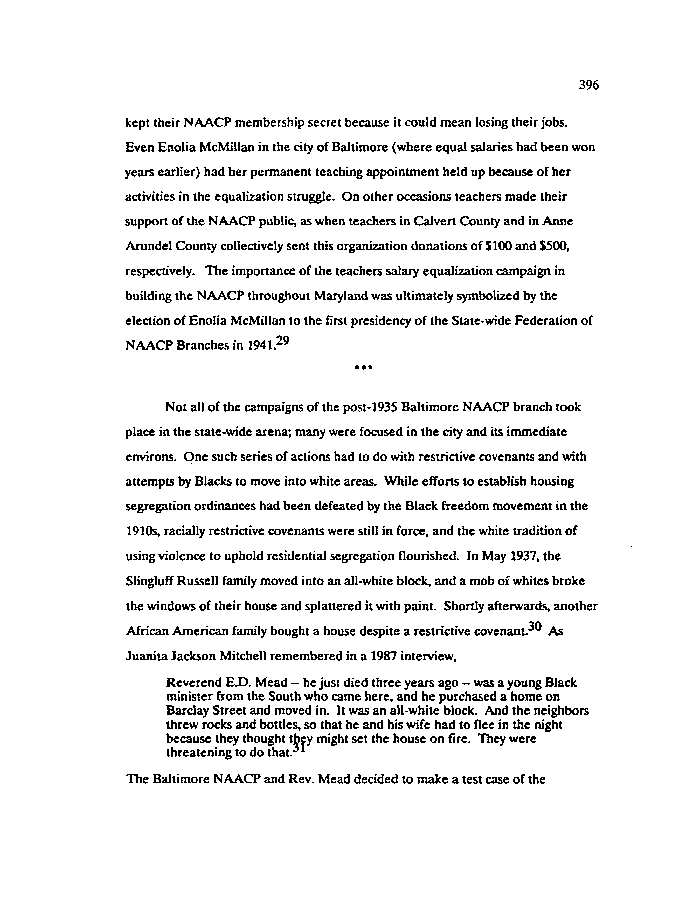|
396
kept their NAACP membership secret because it could mean losing their jobs.
Even Enolia McMillan in the city of Baltimore (where equal salaries had been won
years earlier) had her permanent teaching appointment held up because of her
activities in the equalization struggle. On other occasions teachers made their
support of the NAACP public, as when teachers in Calvert County and in Anne
Arundel County collectively sent this organization donations of $100 and $500,
respectively. The importance of the teachers salary equalization campaign in
building the NAACP throughout Maryland was ultimately symbolized by the
election of Enolia McMillan to the first presidency of the State-wide Federation of
NAACP Branches in 1941.29
Not all of the campaigns of the post-1935 Baltimore NAACP branch took
place in the state-wide arena; many were focused in the city and its immediate
environs. One such series of actions had to do with restrictive covenants and with
attempts by Blacks to move into white areas. While efforts to establish housing
segregation ordinances had been defeated by the Black freedom movement in the
1910s, racially restrictive covenants were still in force, and the white tradition of
using violence to uphold residential segregation flourished. In May 1937, the
Slingluff Russell family moved into an all-white block, and a mob of whites broke
the windows of their house and splattered it with paint. Shortly afterwards, another
African American family bought a house despite a restrictive covenant. As
Juanita Jackson Mitchell remembered in a 1987 interview,
Reverend E.D. Mead — he just died three years ago - was a young Black
minister from the South who came here, and he purchased a home on
Barclay Street and moved in. It was an all-white block. And the neighbors
threw rocks and bottles, so that he and his wife had to flee in the night
because they thought they might set the house on fire. They were
threatening to do that.
The Baltimore NAACP and Rev. Mead decided to make a test case of the
|

